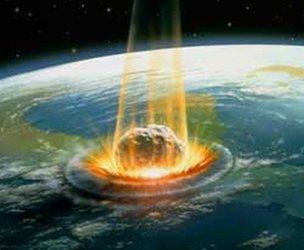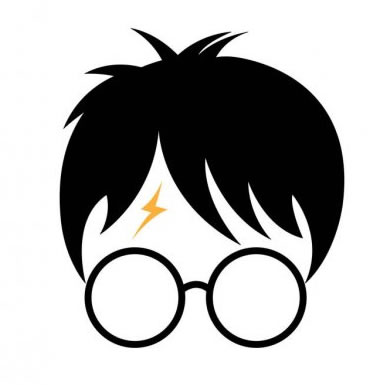Announcements
The revised version of Year Three Astronomy was published on February 25, 2025. Very few substantial changes were made from the old version, so you won't have to, or be able to, do any assignments you have already done in the old version except the final exam and ones you are retaking, but you should read all the lessons because the material in them will be tested on the O.W.L. exam and the N.E.W.T.
Lesson 3) A Troubled Past
Welcome! Our newly formed solar system, which we studied last week, was not the harmonious and, comparatively, empty place that we are accustomed to occupying; instead, many more planets were there. Some were rocky and close to the Sun, others were further out and made up of gas and ice. The massive cloud that had occupied that space collapsed into many varied objects. How, then, did our Earth emerge from the fray?
There Can Only Be Eight
Our solar system: the Sun, the planets, and Pluto
Source: here
All of the planetoids at the time orbited the Sun - the orbits generated by the spinning of the cloud of dust and gas around the new star. New objects developed in various places in this cloud, and the gravitational pull of the Sun kept them from flying off into space. However, because the objects were all formed at about the same time and at different places in the spinning cloud, conflicts occurred, and not all of these objects survived the creation of the solar system. Let’s take a look at some of the players that whittled these bodies down to the eight planets, spread across our solar system, that we know and love today.
To start, gravity played a big part in planetary evolution. Larger planets moving past smaller objects either forced them out of the way or drew them into orbit. That first phenomenon, often called “the slingshot effect,” pushed planets out of their original orbits, as the smaller object’s trajectory would get altered by the gravitational pull of the larger. The video that can be accessed through the link below shows several ways in which the motion of a small object (a blue dot) can be altered when it passes close to a much larger one.
The gravitational pull of a large object can alter the orbit of a smaller one.
Source: here
Some objects, caught at the right angle, were sent far off into space, while others were pushed in towards the direction of the Sun. This effect can be seen most clearly in the case of Neptune. Neptune, many scientists believe, actually formed closer to the Sun than Uranus, the second to last planet. It is believed that Neptune interacted gravitationally with a larger body, perhaps a young Saturn or Jupiter, and was pushed out towards the edge of the solar system.
Gravity also pulled smaller planets into orbit around larger ones, meaning that they lost their planetary title and became moons. Jupiter and the Galilean moons are the best example of this phenomenon. Ganymede, the largest, is bigger than the planet Mercury, and the other moons are also similarly huge. Instead of becoming planets themselves, Jupiter’s gravity pulled in the otherwise massive planetoids to its orbit, ensuring their destiny as moons.
Not all planetoids were destined to become moons, however. Rocky and icy planets formed by accretion, where small amounts of matter came together to form much larger objects. Some of these objects were captured gravitationally much earlier in their formation than others. You may remember from last year that the Sun and Moon pull on the Earth, causing tides and the rise and fall of the sea. When loosely formed objects faced tidal forces from large planetoids, some were pulled apart, losing their shape and becoming little more than massive rocks floating in space. Some of these rocks were pulled into orbit around planets, forming smaller, funny-shaped moons or becoming part of the rings of the outer planets.
Finally, many other newly formed planets in our solar system were destroyed by brute force. Intersecting orbits caused large, solid masses to collide with one another where they intersected. Sometimes these were fatal blows, destroying one or both objects. Other times these were glancing blows, with material being thrown out from one or both objects into space. This whole process took several million years, and the result is our current solar system with eight unique planets.
When Worlds Collide
Collisions between planets and other planets or smaller objects cannot be seen as wholly destructive. Indeed without such collisions, our world and our skies would look very different. As we learned in Year Two, Lesson Nine, the currently most widely accepted theory of the origin of our Moon is that it was the product of a collision between Earth and a Mars-sized planet. The Moon makes Earth a more livable planet by moderating our home planet's wobble on its axis, leading to a relatively stable climate. As we will learn later, Earth got some of its water through collisions with water-bearing objects. Another benefit that a collision made to life on Earth will be discussed at the end of the lesson.
Earth and the Moon have a very special magical relationship. Firstly, the Moon is the closest celestial body to us and reflects the most magic back to Earth of any object, providing us with a powerful source of magic. Secondly there is a special magical connection between the two bodies, as they are made up of the same material and had once been part of the same celestial object. This connection generates a kind of magical resonance which means that the magic reflected to us from the Moon is less like the raw power of solar-generated magic and much more fine-tuned for Earth.
It’s Raining Fire
All those bits and pieces of failed planets did not simply cease to exist. Instead they continued to move through the newborn solar system, where they were pulled into orbit as rings or else flung away again by a passing planet’s gravity. Like the planets, these objects did not coexist peacefully with the rest of the solar system. Individual chunks of space debris, known as asteroids, impacted with all the planets and each other. The most spectacular of these collision events is thought to have occurred around five hundred million years after the formation of the solar system. The image below shows two asteroids colliding.
Two asteroids colliding
Source: here
Late Heavy Bombardment
Evidence gathered by astronauts on the Moon suggests that around half a billion years after the formation of the inner planets, a massive number of asteroids were flung into their path. The result was a massive wave of asteroid impacts that knocked pieces from the newly formed planets and left deep scars in their faces. This impact event, known as the Late Heavy Bombardment, is also thought to have helped “seed” the Earth with elements and compounds that formed all life on Earth. Impacts thought to have come from the Late Heavy Bombardment can still be found on the Moon and Mars.

Artist’s impression of asteroids during the Late Heavy Bombardment
Source: here
Chicxulub Crater
Asteroid impacts did not stop after life began on Earth. The Chicxulub Crater, discovered off the coast of the Yucatan Peninsula in the 1970s, is thought to be the result of a massive asteroid whose impact caused the extinction of the dinosaurs about 65 million years ago. Asteroids do not make craters themselves, much like throwing a stone into sand. Instead, some asteroids are so massive, and moving so quickly, that the shockwave in front of them makes a far bigger impact than the object itself. An asteroid ten kilometers in diameter left a crater almost twenty times bigger than itself, which threw enough debris into Earth’s atmosphere to change the climate drastically and cause the mass extinction that wiped out the dinosaurs, allowing the rat-like mammals that existed then to evolve into thousands of other species, including humans.

Artist's interpretation of the impact that formed the Chicxulub Crater
Source: here
Chelyabinsk, Russia
Perhaps the most notable modern example of an asteroid impact is Chelyabinsk in 2013. Here, an object approximately twenty meters in diameter encountered Earth’s atmosphere and produced a massive shockwave as it exploded. Pieces of the object, meteorites, were found in a nearby lake. The footage is rather spectacular, but many people were also injured by glass sent flying by the midair explosion. This impact in particular made it clear that humans on Earth are still very vulnerable to the dangers posed by massive space debris. The video below shows the meteor before the explosion.
Impacts of this magnitude are much more common than bigger ones like the one that made the Chicxulub Crater. This is good as those larger ones could wipe us out - if we don’t do it to ourselves first through war, climate change, or other consequences of human stupidity.
This concludes the lesson for the week. You will have a short quiz to answer and an essay to write. While the subject of interstellar dangers may be unsettling to some, we will next be discussing the special composition of the Earth in depth and also some of the ways in which the Earth protects us from the dangers of space.
Original lesson written by Professor Gagarina.
- ASTR-201
Enroll
-
Y3 L3: Lesson Quiz
Assignment -
3.3: In with a Bang
Essay
-
Velinea Nite
Head Student
-
Timothy Walsh
Professor's Assistant


